
This content is protected against AI scraping.
How did the Norse Yule turn into a Viking Christmas celebration? In 940 to 961 AD, Haakon the Good was the king of Norway, and during his reign, the English court introduced him to Christianity. Haakon then tried to convert the rest of Norway. It must’ve been such an interesting time, with Viking Yule (or winter solstice) traditions mingling with newer Christian celebrations.
This week, because I was reading a Viking story and decorating my house for Christmas, I got curious about this era. I even went back to a few of the sagas (which make for wild reading, if you’re ever up for it) for clues. Here’s what I found!
12 Days of Yule
In ancient times in Norway, Yule (Jul) lasted twelve days (I’ve found one source that says thirteen.) According to an Icelandic saga in Heimskringla, after Haakon converted to Christianity, he turned Yule into a three-day celebration beginning on December 25, when all the other Christians celebrated it. In the early church, Christmas had also been celebrated by January 6 in some places, but December 25—the day the Romans celebrated the god Mithras—won out.
Despite what it says in the sagas, there are some accounts of Yule still lasting twelve days in Norway—until the day before January 6, which the church settled on for Epiphany.
It’s interesting to remember that in Norway at this time of year, the days were very short. They came soon after the winter solstice, the shortest day of the year. Modern-day Oslo, for instance, sees about six hours of daylight on December 25. I can imagine that before electricity, in such a cold country, in the deep heart of midwinter, gathering for Viking celebrations was probably good for the soul.
Norse Yule Traditions
Yule began with slaughtering livestock, followed by a big feast. One of the sagas writes about a large boar being brought into the hall. People would put their hands on the bristles and make vows before the animal was sacrificed.
While the pagan spiritual associations of this ritual slipped away, sacrificing the boar and presenting its head remained a symbol of Yule and a part of many Christmas celebrations. You may have heard the English Boar’s Head Carol, which dates back to the fifteenth century. Several churches in the United States celebrate Boar’s Head Feasts.
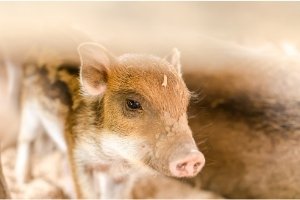
If you’re familiar with Christmas in Norway, you might be wondering if lutefisk—a gelatinous dish of dried whitefish rehydrated in lye—was part of the ancient Norse Yule. It might have been, and it was very likely part of the Viking Christmas, given the fact that it was mentioned in a 13th century saga.
Drinking beer out of horns was a big part of Yule. Although Yule celebrated Odin, the Vikings drank toasts to other Norse gods as well—such as Thor, Freyr, and Brage—and to departed loved ones. Festive drinking has always been a part of many Christian Yule celebrations, although beer was often not the drink of choice.
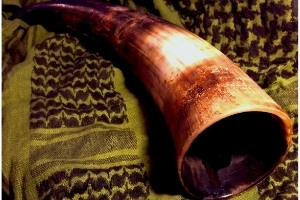
There are some stories about the ancient Norse Yule tradition of leaving food and drink out for ghosts. In one of the sagas, King Halvdan the Black and his guests are sitting at the banquet table when the food disappears right in front of them, which they all, naturally, find pretty depressing. The saga suggests that Odin, rather than ghosts, was responsible. But there are several truly frightening Christmas ghost stories in the Viking sagas.
Even after Yule became Christian, telling ghost stories was a popular part of the festivities. I’m sure that in dark halls, it was a good choice for entertainment, and for some reason, they didn’t choose to tell each other the medieval equivalent of Hallmark Christmas movies instead. When I was a kid, I used to wonder why the song recorded by Andy Williams, “It’s the Most Wonderful Time of the Year,” said “there’ll be scary ghost stories…” Now I know! Perhaps the most famous work of Christmas fiction, the English novel A Christmas Carol, is a ghost story. When he wrote it, Dickens was picking up on an old tradition.
Putting holly, a plant sacred to the goddess Freyja, inside the home was supposed to bring good luck. Holly wasn’t only a Norse tradition, though; reportedly, the Romans used it to decorate their homes at Saturnalia, their pagan winter solstice celebration. “Decking the halls with boughs of holly” is featured in one of the most popular Christian Christmas carols of all time, as is the Yule log (discussed below.)

Julebukking was another Yule tradition. People would wear masks and costumes and go door to door, carrying a goat head (more about goats below.) As the ancient Norse Yule became Viking Christmas, the singing of Christmas songs became a part of this tradition, and people rewarded the singers with drinks or food. The lyrics to “The Wassail Song” are very much in this spirit. This was a lot like our modern-day Halloween trick-or-treating in the United States. Of course, even today, people often pass out Christmas cookies to carollers.
Was there a Viking Christmas tree? Maybe! I’ve come across a few sources that say decorating a Christmas tree with small carvings and gifts for the gods was a part of Viking Yule. In a book from the nineteenth century, I read that in Germany, there was an ancient custom of decorating evergreen trees with apples and nuts in honor of the Norse god Freyr. I haven’t been able to find any original sources yet about tree decorating as a part of the earlier Norse Yule traditions, but if anyone knows of one, let me know.
Yule Symbols
The Yule Goat
This goat made out of straw almost certainly dates back to ancient pagan Yule festivals, and there are several theories, all plausible, about its symbolism. The Yule Goat in Scandinavia may have honored the god Thor, who drove a chariot drawn by two goats. A white goat was the symbol of the sun god in Slavic traditions, which could explain why it became significant at the winter solstice. Scandinavian traditions about saving the last sheaf of grain from the harvest, believing it would bring luck to the Yule celebration, is the most likely origin.
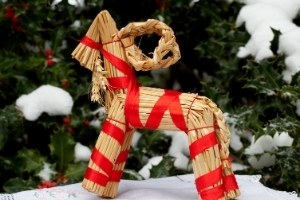
The Yule Log
This is probably the most famous part from the Viking celebrations. The “log” could be a whole tree trunk, big enough to burn every night for all twelve nights of Yule. It may have been tied into the winter solstice and the return of the sun. It inspired a famous French dessert: the Buche de Noel, a Christmas cake decorated to look like a log, sometimes finished with powdered sugar “snow” or meringue mushrooms.
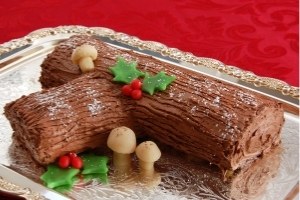
Viking Santa Claus?
Most of us have heard that Santa Claus was Saint Nicolas, but with his long white beard and his Northern residence, Santa Claus also does bear a certain physical resemblance to Odin. He didn’t get around with the help of eight tiny reindeer, but he did ride an eight-legged horse. It’s possible to see some parallels between the Norse version of the Wild Hunt—in which Odin crossed the sky at night with his supernatural hunters—and Santa Claus’s trip around the world in one night. But that doesn’t make Odin Santa Claus. Odin was a complex god, a warrior and a shaman, and generally speaking, not a jolly old soul.
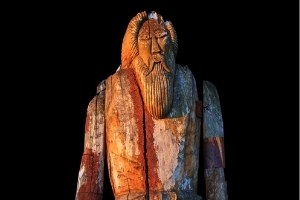
And regardless of any similarities, Santa Claus is, obviously, a real person unto himself.
Did you already know some of these things about the early Viking Christmas? I might add to the post later, as I often do, so if I’ve missed something important about Norse Yule, please let me know in the comments section! And if you’re celebrating Yule in your house, I’d love to hear about your own traditions, too. Thanks so much for reading, and have a great week!
Related Posts












Your deep dive into this is really interesting! The historical sources behind today’s traditions are really fascinating and answered some questions I had in the back of my mind for a long time. I’ve been finding history much more interesting in recent years. With regards to Nordic culture, reading this caused me to search YouTube for the old Disney Epcot Norway ride, Maelstrom (which has been replaced by Frozen Ever After). There are a number of good ride-throughs caught on HD and the ride talks about and displays Nordic folklore and traditions. Thanks for the cool history!
Hi Chris! Ahh, I never went to Disney (maybe someday!), and that Norway ride sounds so cool…I may check that out myself! Hope everything’s going well with you!
I LOVE THIS! I’ve been teaching my students about the connections between pagan and Christian traditions and how interesting it is to have similar ones across the world from each other (Samhain and Dia de Los Muertos) and how the Christians had to adapt to get the cooperation of the folks they conquered (Festival San Juan) etc. Fascinating stuff! I haven’t celebrated Yule before but I’ve been reading about it. I’m a huge Krampus fan (creepy, I know) and love the story. The more we learn about other cultures, the bigger and smaller our world becomes. Thanks for this post! Gives me places to dig in! Rabbit hole, here I come! ??
Hi, R.L.! I’m glad I’m not the only one who’s fascinated by this stuff. It’s so interesting how traditions travelled widely—even thousands of years ago—and changed as cultures collided. I don’t know much about Krampus, probably because I am easily creeped out! Haha. But I love learning how people used to celebrate…and how they still do, around the world. 🙂
Very interesting. Much of that was new to me.
Thanks, Janet! Hope everything’s going well with you. 🙂
What a fun post!
Thanks, Denise! Hope you’re having a good Thanksgiving week!
Thank you for this post! It was really helpful and interesting ! I am trying to find stories and information about the nordic and scandinavian culture although I would never remember to do research on this topic. thanks for sharing the informations you’ve found. I have really enjoyed this post!
Hey, thanks for the kind words, AVR! I think I get interested in pretty obscure things sometimes, so I’m glad you enjoyed it. I hope everything’s going well with you!
What an interesting post. Thank you.
A lot of this was familiar to me. I’ve gathered bits and pieces over the years from church studies.
Our pastor is a history buff. One of his degrees is in antiquities. He sprinkles his sermons and classes with interesting facts. I’m sure he will be referring to some of this same information during the Christmas season.
Thank you for sharing.
Hi, Bonnie! It really is interesting to see how traditions meld together. My sister is a pastor, and she’s a history buff, too. I hope you stay safe and have a lovely Christmas season!
I had no idea that there was a parallel between Odin’s mythology and Santa Claus. I like the eight-legged reindeer; much more efficient. The Norse traditions around Yule and winter solstice are fascinating. Thanks for sharing.
Hi, Naomi! Thanks for reading! I always get interested in ancient cultures. I hope you’re doing well!
Loving this so much. Makes me feel connected to my Viking/ Scandanavian heritage. Thanks
Hello There. I found your blog the usage of msn. That is
a very well written article. I will make sure to bookmark it and come back to read extra of your helpful information. Thanks for the post.
I will definitely return.
Thank you for another magnificent article.
The place else may anyone get that type of info in such a perfect manner of writing?
I have a presentation next week, and I am on the search for
such info.
I’ve gathered bits and pieces over the years from church studies. Our pastor is a history buff. One of his degrees is in antiquities. He sprinkles his sermons and classes with interesting facts. I’ve been teaching my students about the connections between pagan and Christian traditions and how interesting it is to have similar ones across the world from each other.
I found your blog the usage of msn. That is
a very well written article. I will make sure to bookmark it and come back to read extra of your helpful information. Thanks for the post.
I will definitely return.
The one who has not Christmas in his heart will never find it under a tree. Celebrate the true meaning of Christmas and embrace the warmth of your closest ones. Merry Christmas. May your heart and home be filled with all of the joys the festive season brings. Here is a toast to a Merry Christmas and prosperous New Year.
ornaments